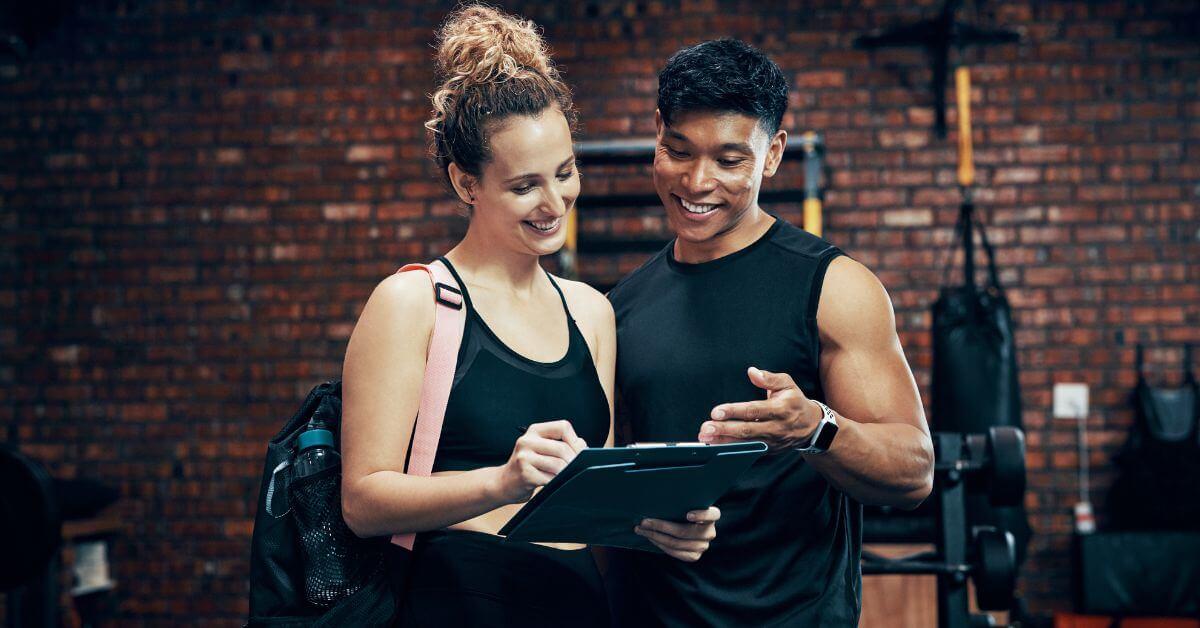To design a functional training program, determine a person’s present physical capabilities, establish clear goals, and create workouts that specifically target certain muscle groups and movement patterns.
Table of Contents
ToggleIt should have a range of exercises that increase in complexity and difficulty as well as activities that enhance stability, balance, and coordination.
The program should be detailed, progressive, and tailored to each individual, and it should be periodically reviewed and altered as necessary depending on development and shifting goals.
How to Design a Functional Training Program?
- Start With The Functional Fitness Assessment
- Apply the Principle of Specificity
- Use Functional Movements in All 3 Planes of Motion
- Choose Exercises Based on Functional Movement Patterns
- Incorporate Core Exercises
- Use Compound Exercises First, Single-Joint Exercises Second
- Alternate Bilateral and Unilateral Exercises
- Vary the Tempo Between the Three Phases of Dynamic Movement
- Apply Principles of Volume, Intensity, Tempo, and Rest Intervals
- Apply Periodization Principles
- Design a Functional Training Mesocycle
Start Building Your Dream Body Today
Ready to elevate your fitness game without falling into the trap of dull, repetitive routines that just don’t deliver? Imagine sculpting your ideal physique and boosting your health, all while still enjoying life’s pleasures, like those irresistible weekend getaways and your aunt’s legendary cheesecake. With our online fitness and nutrition coaching service, you don’t have to compromise. Dive into a personalized fitness journey that blends perfectly with your lifestyle, not against it. Book your completely free discovery consultation today, and take the first step towards a transformation that doesn’t require giving up the joys of life.

“I was skeptical about online fitness coaching, but Functional Body Savage completely changed my perspective. Vanja and Radomir’s personalized approach and attention to detail have helped me achieve goals I never thought possible. I’m stronger, more confident, and grateful for their guidance.”
Emily Thompson, San Francisco, CA
Learn More About Our Online Coaching ServiceQuick Summary
- Ask fitness professionals to assess your fitness level, goals, and restrictions first.
- Include functional fitness exercises that may be performed in the sagittal, frontal, and transversal planes of motion.
- Compound exercises and functional movements should be performed first, then accessory lifts and single-joint isolation exercises.
- Change the tempo of dynamic movement and alternate bilateral and unilateral exercises.
- Utilizing linear, nonlinear, or reverse periodization, create a program by adhering to the principles of volume, intensity, pace, and rest periods.
- Ask health professionals to incorporate a dynamic warm-up, gradual overload, enough rest and recovery, a good diet, and the perfect technique to optimize the program’s results.
Step-By-Step Guide to Design a Functional Training Program
We present to you a guide to creating a functional training program that can be useful for athletes of all fitness levels and regular fitness industry gymgoers:
1. Start With The Functional Fitness Assessment
Begin developing your functional training plan by assessing your current fitness level and noting any specific limitations or weaknesses. This can be done by measuring your strength, flexibility, and body composition, as well as performing functional movement analysis. This will give you a baseline to work from and help you identify areas in need of development.
2. Apply the Principle of Specificity
It’s critical to be aware of your precise objectives; whether they are to build muscle mass, reduce body fat, or enhance cardiovascular fitness, you should create a program that is tailored to meet them. Accordingly, the exercise routine, sets, repetitions, and intensity must be adjusted to the individual’s unique demands and goals. Applying the principle of specificity will enable you to develop a program that is more successful and efficient in assisting you in achieving your goals.
“Design a workout that prepares an athlete to play a sport, not a workout that mimics one of the strength sports (bodybuilding, powerlifting, Olympic lifting).” – Michael Boyle, Strength and Conditioning and Strength Training Consultant
3. Use Functional Movements in All 3 Planes of Motion
These are sagittal, frontal, and transverse planes of motion of the human body. You may exercise in all three planes of motion to work every muscle in your body and enhance overall mobility and everyday life functional movements. As it keeps the body supple and well-balanced, it also aids in lowering the chance of injury [1].
Sagittal Plane
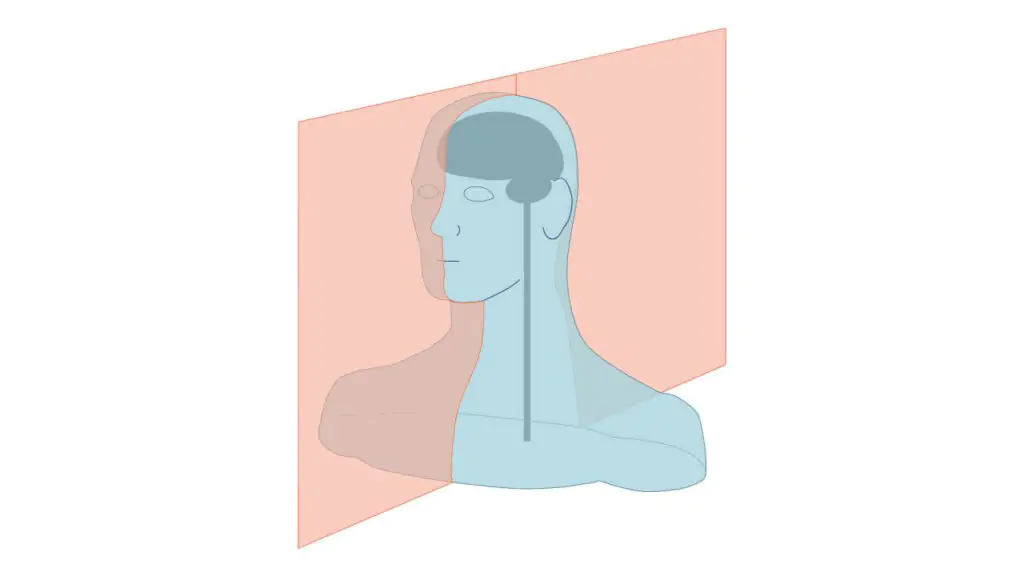
The sagittal plane, which separates the body into its right and left halves, controls forward and backward motion. Squats, lunges, deadlifts, and biceps curls are a few exercises that engage the sagittal plane.
Frontal Plane
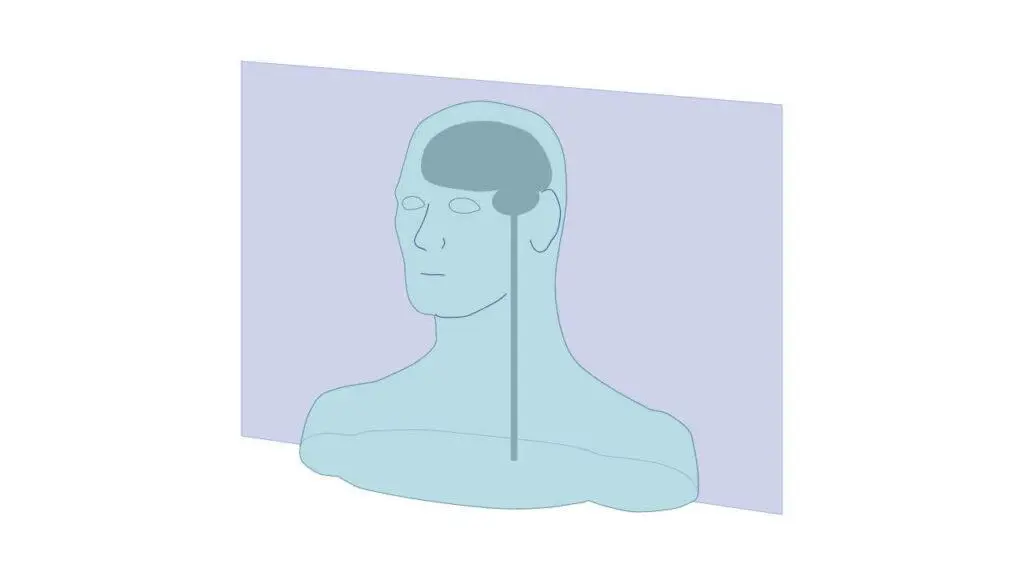
The frontal plane, which separates the body’s front and back, is in charge of movement in all directions. Side lunges, lateral lifts, and side planks are a few exercises that engage the frontal plane.
Transversal Plane
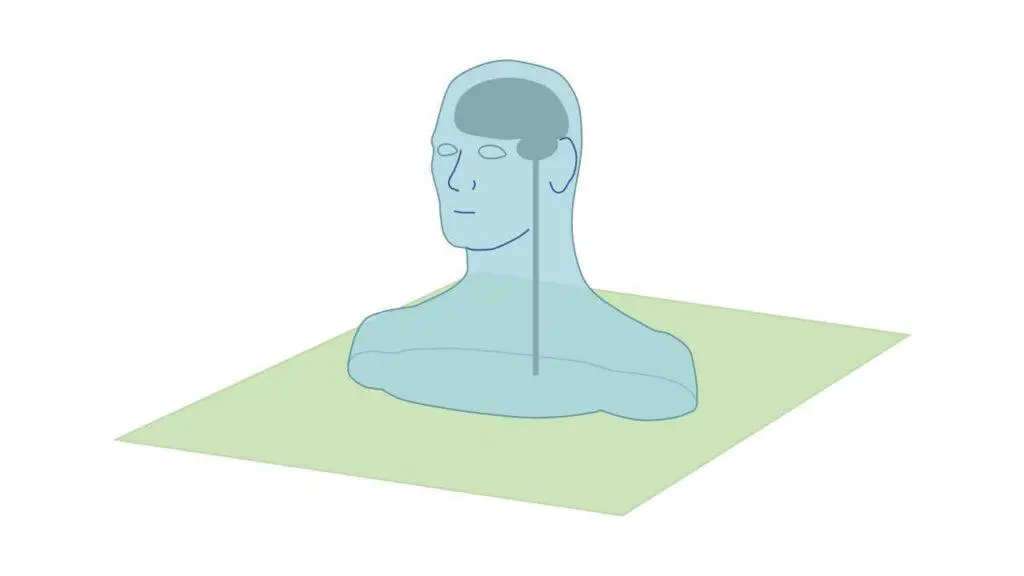
The plane that separates the body into top and bottom portions (upper and lower body) and is in charge of rotation is known as the transverse plane. Rotational movements like Russian twists, wood chops, and some variations of medicine ball slams are a few examples of exercises that work in the transverse plane.
4. Choose Exercises Based on Functional Movement Patterns
Exercises that imitate everyday movement patterns, including pushing, pulling, squatting, deadlifting, twisting, and walking, should be included in functional training.
Pushing Movement Pattern
Pushing is one of the most important functional training movements to concentrate on when it comes to functional training. Using the upper body muscles normally, this movement includes pushing a weight or resistance away from the body. Push-ups, overhead presses, and the chest press are examples of exercises that fit within this category. Targeting the chest, shoulders, and triceps, these exercises are excellent for building upper body strength. They also help with posture and stability.
Vertical Pushing Exercises
Vertical push exercises are important for the development of the anterior deltoid, lateral deltoid, triceps, and rotator cuff muscles. They are crucial for maintaining the health of the entire shoulder joint since the capacity to press weight vertically is an indication of a strong, properly functioning rotator cuff.
The overhead press, landmine press, and Arnold press are three of the most popular examples of vertical push exercises. In each of these, the majority of the repetitions involve pushing outward and upward. Depending on the activity, the pectoral muscles, trapezius muscles, and biceps brachii may also be periodically activated.
A few machine-based actions, aside from free-weight vertical push exercises, similarly mimic the training stimulus present in their free-weight counterparts, typically with the added benefit of less injury risk and consistent duration under stress.
Handstand push-ups, pike push-ups, military presses, jammer presses, and push presses are all bodyweight vertical push exercises.
Horizontal Pushing Exercises
Horizontal pushing exercises are any exercise that involves moving a weight straight out in front of you so that it’s going away from your torso horizontally.
The muscles of the pectoralis major and minor, triceps brachii, which are two sizable muscle groups that provide a significant amount of the force needed for upper body training, as well as the anterior deltoids and serratus anterior, are all recruited during these movements.
Push-ups, bench presses, Svend presses, dips, coffin presses, cable presses, dumbbell incline bench presses, and plate presses are among the most popular and efficient horizontal push exercises.
Pulling Movement Pattern
The pulling movement pattern is a basic upper body movement pattern that comprises the shoulder, hips, core, and arms. It is most typically seen in pull-ups, deadlifts, and other vertical pull variations to produce dynamic force in the pulling plane.
This pattern must first be introduced and developed from a position of full-body stability, which is accomplished in the inverted row. The pillar is challenged in this position to generate tension and isometric stability via the legs, hips, pelvis, and spine, while the upper body struggles to generate dynamic force in the pulling plane.
Vertical Pulling Exercises
Vertical pull exercises include pulling the resistance in a vertical direction. Pull-ups and chin-ups are some examples of these exercises.
These exercises target the upper back muscles of the posterior chain, including the lats, traps, rear deltoids, rotator cuffs, and biceps brachii. They also aid in posture improvement and the development of a thick, wide back. Squeeze target muscles such as the lats, rhomboids, and traps when executing vertical pull exercises to improve your mind-muscle connection.
They may be performed with cables or your own body weight. You can also add resistance bands, and Trx straps, and use a cable machine with a wide or a narrow grip handle or barbell with a landmine attachment to increase or decrease the difficulty of certain exercises to adapt them to your fitness level.
Horizontal Pulling Exercises
Horizontal pulling exercises are any exercises in which you move a weight horizontally in towards your body from straight out in front of you. Bent over rows, seated cable rows, T-bar rows, dumbbell rows, Trx rows, chest supported machine rows, and posterior delt cable fly are all examples of horizontal pulling actions.
Horizontal pull exercises have numerous advantages, including strengthening the core muscles, lowering the risk of shoulder injuries, developing strong and toned muscles in the back, biceps, and triceps, assisting with posture issues, targeting all muscles used in an overhead position, and assisting with mobility issues [2].
Squatting Movement Pattern
Squatting is a basic human movement pattern that uses almost all of the body’s muscles. It enhances mobility, performance, and fitness for activities of daily living.
Variety of squats like bodyweight, goblet, sumo, hack, split, barbell squats (back, front, and overhead), leg presses, lunges, and step-ups are all included in the squatting movement pattern (plate loaded, selectorized machines, etc.). It entails lowering the body’s center of mass as near to possible to the ground, flexing the hips, knees, and ankles, and then rising back up on one’s own without the aid of the upper body. For mobility needs and daily routine activities, this pattern is employed.
The glutes and quadriceps are the main movers of the squat, although depending on the kind and depth of the squat, the hamstrings and adductors also play important roles. To correctly squat, a lot more muscles are needed, including those in the back and core. Assessing your existing skill level and trainability is crucial before using a streamlined progression plan to experiment with learning the squat.
Deadlifting Movement Pattern
The deadlift movement pattern is a compound movement that works both the lower and upper body. It entails lifting up a weight from the floor, getting into a standing position, and then lowering the weight while maintaining a neutral spine.
The hips must bend forward at the waist while the upper body, core, and hips must all be actively engaged. The hamstrings, glutes, lats (upper back), and core stability muscles should all be used during deadlifts. Deadlifts can strengthen the posterior chain, increase muscular mass there, and aid with posture and stability [3].
Examples of deadlifting movement exercises are: barbell deadlifts, sumo deadlifts, trap bar deadlifts, dumbbell deadlifts, kettlebell deadlifts, Romanian deadlifts, and single-leg deadlifts.
Twisting Movement Pattern
Twist is a movement pattern that involves both the ability to twist and resist rotation. Proper torso rotation is an even distribution of twist throughout the torso, with minimal twisting coming from the lower back.
This movement pattern can be trained in both a training or sporting context, such as explosive change of direction in sport, or in a more isolated context, such as cable woodchoppers or kettlebell windmills. In the gym, anti-rotation exercises are very effective at strengthening the integrity of this movement pattern, such as Pallof presses and side planks.
Different muscles can be put on trial depending on the specific rotational exercise or task. The prime movers of the twist are the muscles in the core, specifically the oblique muscles and the transverse abdominis.
Examples of twisting movements include russian twists, wood chops, medicine ball slams, plank rotations, cable rotations, and standing twists.
Gait Movement Pattern
Gait is the movement pattern of walking, in which exercises are designed to improve the ability of an individual to walk, run, or perform other locomotor activities such as climbing stairs, climbing ladders, etc. It is a complex, full-body movement that calls for the coordinated use of several joints and skeletal muscles. The pelvis, spine, upper and lower limbs are usually involved in it. Age, personality, mood, and societal influences all have an impact on a person’s stride pattern [4].
Gait training exercises can be done on a treadmill and muscle-strengthening activities. Some persons additionally require the use of assistive devices in order to better help them build and exercise their muscles.
Several exercises for improving gait movement are:
- Walking, which is low-impact exercise and it’s easy to do.
- Running, a high-impact exercise, and it’s great for cardiovascular fitness and calorie burning.
- Jumping and hurdles, also high-impact exercises, great for developing power, explosiveness, coordination and agility.
- Heel and toe walks, which target foot and calf muscles and can be done using bodyweight.
5. Incorporate Core Exercises
Incorporating core exercises can help improve posture, make regular tasks simpler, reduce low back discomfort, and even enhance balance and minimize the chance of falling [5]. A well-rounded fitness plan should include core work. Here are groups of core exercises that you can use in your training:
Core Flexion
Core flexion exercises are exercises that are based on spine flexion or curling, which moves the shoulders toward the hips. The rectus abdominis, or “six-pack” muscle, and the internal and external obliques are the main muscles that these workouts predominantly target. Core flexion exercises are crunches, sit-ups, leg raises, reverse crunches, and bicycle crunches.
Core Anti-flexion
Core anti-flexion exercises include limiting the flexion or curling of the spine while maintaining a stable position for the shoulders and hips. The transverse abdominis and the lumbar multifidus, which are crucial for preserving a stable spine and safeguarding the lower back, are the major targets of these exercises. Exercises examples are planks, side planks, dead bugs, stir the pot and Palloff press.
Core Lateral Flexion
Core lateral flexion exercises entail resistance to lateral flexion or side bending of the spine. These exercises primarily target the oblique muscles, which are responsible for trunk rotation and lateral flexion, hence aiding with body stability and balance. Pilates, side leg series, and sidebands are some exercises that target core lateral flexion.
Core Lateral Anti-flexion
Core lateral anti-flexion exercises are exercises that involve resisting the lateral flexion or side bending of the spine. These exercises mainly focus on the oblique muscles, which are in charge of rotating and lateral flexing the trunk and supporting the body’s stability and balance. Similar to core anti-flexion exercises, but with an emphasis on lateral or side bend, are these exercises. Kneel-to-stand overhead holds, bird-dogs, rack carries, waiters carries, side planks with rear delt flies, Palloff presses overhead, and side plank rows are a few examples of core lateral anti-flexion activities.
Core Rotation
Core rotation exercises are exercises that involve the rotation of the trunk, specifically targeting the muscles that control rotation of the spine such as the internal and external obliques. In addition to assisting in injury prevention, these exercises serve to increase the stability and mobility of the trunk. Landmine rotations, Russian twists, medicine ball slams, cable or band rotations, and so forth are core rotation exercises.
Core Anti-rotation
Core anti-rotation exercises entail preventing trunk rotation by targeting muscles that govern anti-rotation of the spine, such as the transverse abdominis, internal obliques, and quadratus lumborum. These exercises assist in enhancing the trunk’s stability and control while also assisting in injury prevention. Single-arm planks, standing cable anti-rotation chops, shoulder taps, and ab dolly rollouts are a few examples of core anti-rotation exercises.
Chops and Lifts
Chops and lifts are functional exercises that require moving a weight or item in a diagonal or vertical plane; they are excellent for working the core muscles. The dynamic movement of the trunk during these workouts serves to increase the body’s stability, balance, and power. Both chops and lifts movements require strong core muscles because they support the spine and transmit force from the bottom to the upper body.
Great examples of the chops exercises that target core are: sit-up to half chop, reverse woodchop, stability ball core rotation, slam ball woodchop, and standing core rotation with band.
Great examples of the lifts that target the core are: squats, bench presses, deadlifts and overhead presses.
“Core training is really about motion prevention, not motion creation.” – Michael Boyle, Strength and Conditioning and Strength Training Consultant
6. Use Compound Exercises First, Single-Joint Exercises Second
Compound exercises, which include many muscle groups and joints, are supposed to be performed first in a workout since they are often more demanding and take more energy and effort.
Exercises that use several joints and target many muscle groups at once are referred to as compound movements. Examples include the deadlift, squat, bench press, and rows. These strenuous exercises serve to enhance functional movement patterns while also being particularly effective in increasing overall strength and muscle growth through submaximal or maximal effort lifting.
You should proceed to single-joint exercises like bicep curls, tricep extensions, leg extensions, and leg curls after finishing the compound exercises. These activities are meant to target particular muscle groups and are often less strenuous. When you perform these exercises following the compound exercises, the primary muscle groups will already be fatigued, allowing the single-joint exercises to concentrate on isolating and strengthening specific muscle groups.
Compound Exercises or Main Lifts
Compound exercises or main lifts are exercises that involve multiple joints and muscle groups. Any strength training program design should start with these exercises since they are the most efficient at building strength and developing muscle hypertrophy. The most common compound exercises are deadlifts, squats, bench presses, pull-ups, shoulder presses, and rows.
Because they involve many muscle groups cooperating, compound exercises are thought to be more useful and effective at fostering functional strength and making daily tasks effortless. These exercises should be performed first in your training session when you are the most energized and strong since they are the “big players” in the workout.
It is crucial to remember that while combining compound exercises, it is essential to concentrate on perfect form, employ the right technique, and use progressive overload, which is the steady increase of resistance over time, to prevent injury and initiate development.
Accessory Lifts and Single-Joint Exercises
Accessory lifts and single-joint exercises are exercises that are utilized as a supplement to your main lifts or compound exercises. Commonly, these specific exercises are intended to strengthen weaker body parts or certain muscle groups.
Exercises known as accessory lifts have varied variants but are quite comparable to main lifts. A form of the deadlift that specifically targets the quadriceps and glutes more than the standard deadlift is the sumo deadlift. Alternatively, the barbell curl is an accessory lift for the biceps, but a pull-up is a compound exercise for the biceps.
While a squat is a great compound exercise for the legs, single-joint exercises such as leg extensions and leg curls can be added to target the quadriceps and hamstrings more specifically. Similar to this, accessory lifts like triceps extensions and bicep curls can be added to focus on the smaller muscular groups that may not be as intensely challenged during compound exercises like the bench press or rows.
7. Alternate Bilateral and Unilateral Exercises
Alternating between bilateral and unilateral exercises is a great way to add variety to your workout program with improving muscle imbalances and to targeting different muscle groups. Bilateral exercises include using both arms and legs at once, whereas unilateral exercises only need the use of one arm or leg. You may target different muscle groups and correct any imbalances in your body by performing a bilateral exercise, such as the squat, followed by a unilateral exercise, such as the lunge (this is especially true if you perform these exercises with free weights).
Unilateral Exercises
Unilateral exercises are performed with only one limb at a time, unlike bilateral exercises, which are performed with both limbs simultaneously. Single-leg squats, single-arm lat pulldowns, lunges, step-ups, and single-arm rows are some examples of unilateral exercises. In sports and activities that require moving on one leg, such as sprinting, jumping and cutting, these exercises are helpful in improving balance, stability, and single-leg strength. They can also help improve overall muscular symmetry and reduce muscular imbalances.
“When it comes to your entire lower body, most people stick with squats, leg press, lunges, and some resistance machines. Not only is this boring, but it also fails to challenge the legs in all the ways they can be used. In particular, it completely ignores the importance of single leg strength.” – Adam Sinicki, AKA The Bioneer, author of the Functional Fitness and Beyond
Bilateral Exercises
Bilateral exercises are movements in which both sides of the body work together to produce force and move a given load. Bench presses, barbell rows, squats, and deadlifts are a few examples of bilateral exercises. Because weight may be uniformly distributed across both sides of the body during bilateral exercises, they are more stable than unilateral activities.
It’s an excellent method for improving motor control in the bend and squat movement patterns. You can manage the high time under tension required to develop motor control by using both extremities simultaneously. It is the most effective approach to get absolute strength. You may exert more energy and lift bigger weights since more muscles are involved in the activity and balance is usually not an obstacle.
8. Vary the Tempo Between the Three Phases of Dynamic Movement
Varying the tempo between the three phases of dynamic movement exercises is an important aspect of functional training, and it can help to increase the intensity and effectiveness of your workout. This entails adjusting the movement’s pace during the eccentric, isometric, and concentric stages of dynamic movement.
Eccentric Phase
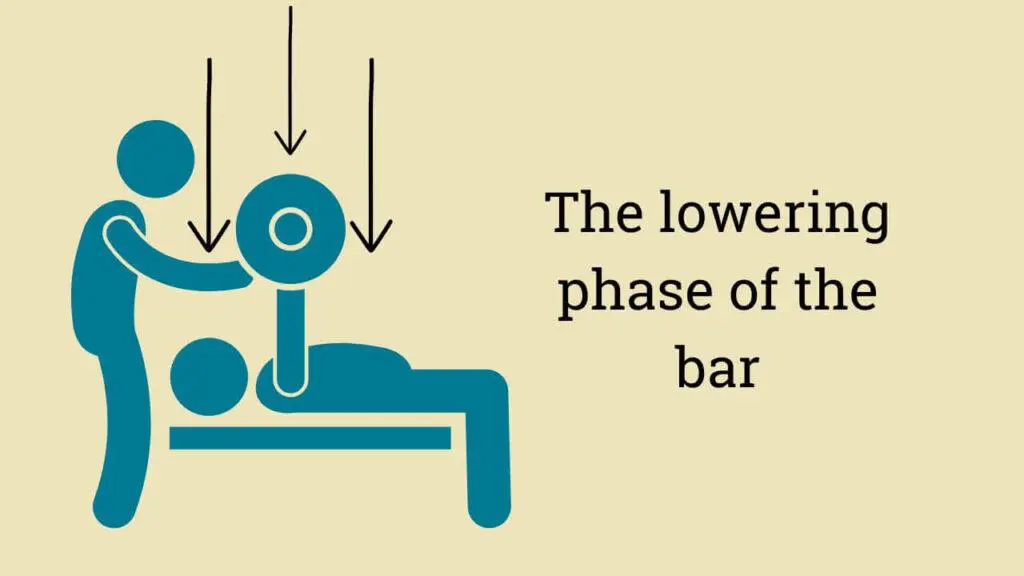
The eccentric phase of a dynamic movement is the phase in which the muscle lengthens while under tension. Since more resistance or weight is typically employed during this phase, it is sometimes referred to as the “negative” phase. Because it allows for more muscular activation and has the potential to promote strength and muscle growth, the eccentric phase is crucial. Exercises that emphasize the eccentric phase include negative reps, in which the weight is gradually brought down, and eccentric-only training, which solely targets the eccentric phase.
It’s also worth noting that the eccentric phase can cause greater muscular damage and soreness, so maintain appropriate technique and begin with less weights while focusing on this phase [6].
Isometric Phase
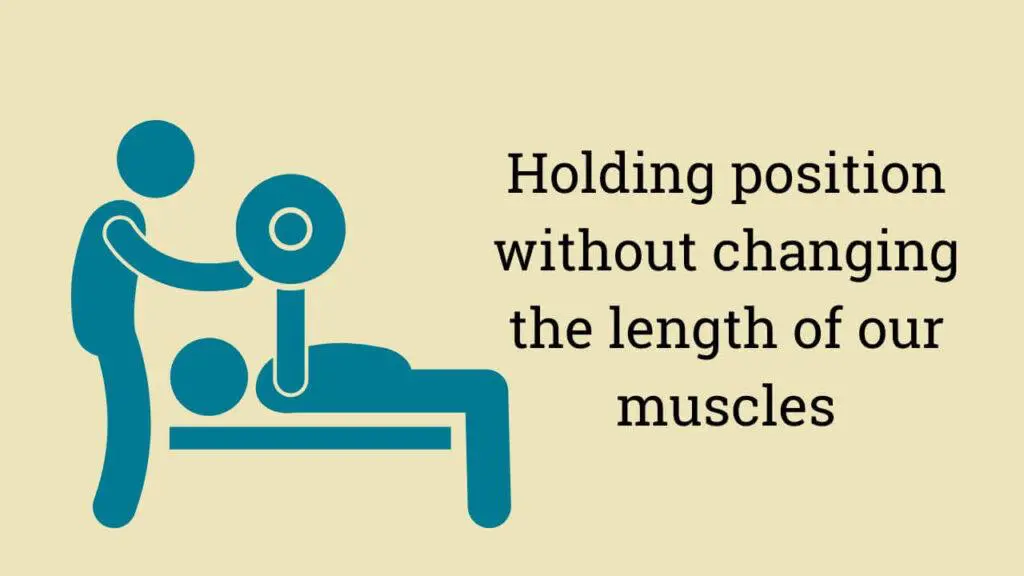
The Isometric phase of dynamic movement refers to the phase where there is no change in muscle length, but muscle tension is still present. Due to the muscle’s continued fixation in place, this period is sometimes referred to as the static phase. Instead of actively moving across a range of motion at this stage, the muscle is working to hold the position. The exercises known as isometrics include holds, wall sits, and planks.
These exercises are especially beneficial for persons who have a limited range of motion since they allow you to train the muscle without moving the joint to its full extent. To target certain muscle groups and increase general strength and stability, these exercises can also be included in functional training regimens. It is crucial to remember that for best effects, the isometric phase should be performed in conjunction with other dynamic movement phases, such as the concentric and eccentric phases.
Concentric Phase

The Concentric phase of dynamic movement is the period during which the muscle shortens as it contracts. Since the muscle is actively attempting to move the weight or resistance during this period, it is often referred to as the “positive phase.” Energy is used up during this phase when the muscle fibers contract and provide force to lift the weight. Exercises using the concentric phase include push-ups, squats, and bicep curls.
It’s also crucial to remember that for best benefits, the concentric phase should be utilized in conjunction with other dynamic movement phases, such as the eccentric and isometric phases.
9. Apply Principles of Volume, Intensity, Tempo, and Rest Intervals
Volume, intensity, pace, and rest periods are important factors in functional training. They are employed in order to alter the training stimuli in order to attain certain training objectives.
Volume describes the total amount of work done during an exercise or over time. Sets, repetitions, and the total amount of weight lifted can be used to quantify this. In functional training, the volume should increase progressively as the person gets stronger and more used to the exercises, beginning out at a lower volume.
The level of effort put out during an exercise or training session is referred to as intensity. Usually, it is expressed as a percentage of the one-repetition maximum (1RM). The intensity of functional training should increase gradually and be adapted to the level of fitness of the individual.
Tempo refers to the speed at which the exercises are performed. Time under stress, or how long the muscle is actively engaged throughout each exercise, is a metric that may be used to quantify tempo. To target various muscle fibers and increase total muscular endurance, the pace of functional exercise should be adjusted.
The length of time in between sets and exercises is referred to as a rest interval. Rest periods in functional training should be adapted to the degree of fitness of the individual and the particular program objectives. While longer rest intervals enable better recovery and more intensive activity, shorter rest periods might raise metabolic stress.
10. Apply Periodization Principles
Periodization in functional training refers to the process of strategically planning and organizing your training program over a specific period of time. The goal of periodization is to ensure that your training program is progressive and challenging, while also allowing for adequate rest and recovery.
Periodization Training Phases
Periodization training is commonly broken down into three phases: macrocycles, mesocycles, and microcycles.
Macrocycles
Macrocycles are the longest and largest phase that normally lasts from a few months to a year. Building a foundation of strength and endurance throughout macrocycles paves the way for subsequent stages of training that are more targeted.
Mesocycles
Mesocycles often last a few weeks to a month, making them shorter than macrocycles. Each mesocycle has a distinct objective, such as boosting muscle growth, raising cardiovascular fitness, or enhancing sport-specific skills.
Microcycles
The microcycle phase is the shortest, usually lasting one week. Microcycles’ main purpose is to fine-tune and modify the training program in light of improvement and recuperation. To improve performance and avoid injury, this phase permits modifications to volume, intensity, and rest periods.
Periodization Training Models
Periodization training models are systematic approaches to organizing training programs over a period of time, typically several weeks to several months, in order to achieve specific goals. Here we have main periodization training models:
Linear Periodization
Linear periodization is a conventional method in which the individual steadily increases the amount and intensity of training over time, while lowering the volume and intensity of training as the individual approaches a competition or peak performance. Athletes and bodybuilders frequently utilize this model.
Nonlinear or Undulating Periodization
Nonlinear or undulating periodization is a modern strategy that calls for switching between various training volumes and intensities over the course of a shorter period of time, like a week or a month. Athletes and fitness enthusiasts who seek to increase their overall fitness and performance frequently adopt this concept.
Reverse Periodization
Reverse periodization is a strategy in which high-intensity, low-volume training is prioritized initially, then low-intensity, high-volume training is gradually introduced over time. Athletes who want to increase their stamina or muscle mass frequently adopt this strategy.
11. Design a Functional Training Mesocycle
Designing a functional training mesocycle is crucial for progress and achieving desired results. A mesocycle is a section of a training regimen that concentrates on one or more specific objectives, including boosting hypertrophy, strength, or power. Hypertrophy-focused, strength-focused, and power-focused mesocycles are the three basic kinds that are frequently utilized in functional training.
Hypertrophy-Focused Phase
The hypertrophy-focused phase commonly lasts 4-6 weeks and is intended to improve muscular growth. This phase is distinguished by a high volume and moderate intensity, with an emphasis on 6-12 repetitions with moderate to heavy weights.
Strength-Focused Phase
Strength-focused phase generally lasts 6-8 weeks and focuses on improving maximum strength through exercises with low repetitions and heavy weights. The objective is to improve the muscle fibers’ capacity to create force. This phase is frequently preceded by a hypertrophy-focused phase to establish a foundation of muscular mass.
Power-Focused Phase
Power-focused phase is typically 4-6 weeks long and focuses on boosting power, which is the result of combining strength with speed. In this stage, exercises like leaps, throws, and Olympic lifts frequently entail plyometric and explosive motions with low weights. Increasing the muscles’ capacity to generate force fast is the aim. For those who wish to increase their power output and explosiveness while still gaining coordination and control, this phase is appropriate.
“Increased power translates into a faster, more explosive athlete.” – Michael Boyle, Strength and Conditioning and Strength Training Consultant
7 Tips to Maximize Effects of Functional Training Program
The tips to maximize the effects of a functional training program are crucial for developing general body function, mobility, stability, and strength in order to improve performance and avoid injury. Observe the following important advice:
1. Incorporate a Dynamic Warm-Up
Warming up the muscles and joints is essential before beginning a functional training program in order to avoid injury and get the blood circulating. Various exercises that target various muscle groups are performed as part of a dynamic warm-up to assist the body get ready for the activity to come.
2. Incorporate Progressive Overload
Progressive overload is the term used to describe the steady upping of exercise resistance or difficulty over time. Increasing the weight, repetitions, or sets of your workouts over time will stress your muscles and encourage muscular growth. It implies that you should work to gradually lift greater weights or complete more reps. Your muscles will benefit from the challenge and will expand as a result.
“Thus we can train with heavier weights and see bigger jumps in our maximum potential. From there, the aim is to continuously increase the amount of weight as your strength gets greater. This is called progressive overload, and it’s probably the most important pillar of strength training.” – Adam Sinicki, AKA The Bioneer, author of the Functional Fitness and Beyond
3. Increase Rest and Recovery
In order to prevent injuries and enable the body to heal and develop stronger muscles, it is essential to have enough rest and recovery time. Get enough sleep, and add foam rolling and stretching to your post-workout routine to aid with muscle recovery. This will hasten muscle recovery, ease muscular pain, and help you lose weight.
4. Increase Protein Intake
Getting adequate protein is essential for healthy lifestyle, muscle growth, everyday function, and repair. Protein consumption per day should be approximately 1 gram per pound of body weight. A well-balanced diet rich in protein sources such as lean meats, fish, eggs, and dairy products helps guarantee that your body obtains the necessary quantity of protein to assist you in muscle growth.
5. Use Proper Technique
To optimize benefits and avoid injury, it is critical to complete exercises with proper technique. This entails activating the appropriate muscles and going through the whole range of motion.
6. Use Supersets
Supersets are a way to increase intensity and get more done in less time by performing two exercises back-to-back without rest.
7. Track your development
Keep an eye on your progress during the functional training program by monitoring your strength levels, muscle growth, and body composition. Utilize this information or take feedback from a personal trainer to change your full-body workout as needed to continue challenging your muscles and promoting growth.
Functional Training Program Example: 4-day Workout Split
Monday:
- Bodyweight squat
- Bodyweight push-up
- Front plank
- Side plank
- Single-leg deadlift
- TRX rows
Tuesday:
- Dumbbell deadlift
- Dumbbell overhead press
- Ab crunches
- Side crunches
- Rear Foot Elevated Split Squat
- Negative pull-ups
Thursday:
- Single-leg Hip thrust
- One-arm bench press
- Band core rotation
- Dead bug
- Unilateral hamstring sliders
- Single-arm dumbbell row
Friday:
- Bilateral bodyweight hip thrust
- One-arm kneeling dumbbell overhead press
- Cable lifts
- Cable chops
- Bilateral hamstring sliders
- One-arm lat pulldown
Sets: 2
Repetition: 6
Tempo: 2-1-1
Rest Interval: 90s
How to Get the Most Out of Your Functional Training Program?
To get the most out of your functional training program, you may combine clever design, constant effort, and a focus on ongoing improvement. Starting with an evaluation, using the specificity principle, and exercising in all three planes of motion will put you on the right track to a thorough exercise that meets your individual fitness goals.
Your goals can also be attained by including core and compound exercises, employing a variety of rep ranges, and tempos. You may optimize the advantages of your program by including the concepts of volume, intensity, pace, and rest periods.
Incorporating a dynamic warm-up, monitoring your progress, and adopting measures to assist recovery, such as increasing your protein intake and emphasizing rest and recovery, can all help you get the most out of your functional training program. You may reach your exercise objectives and change your body into a more powerful, competent machine with commitment, consistency, and a focus on the intelligent design of your training program.
Start Building Your Dream Body Today
Ready to elevate your fitness game without falling into the trap of dull, repetitive routines that just don’t deliver? Imagine sculpting your ideal physique and boosting your health, all while still enjoying life’s pleasures, like those irresistible weekend getaways and your aunt’s legendary cheesecake. With our online fitness and nutrition coaching service, you don’t have to compromise. Dive into a personalized fitness journey that blends perfectly with your lifestyle, not against it. Book your completely free discovery consultation today, and take the first step towards a transformation that doesn’t require giving up the joys of life.

“I was skeptical about online fitness coaching, but Functional Body Savage completely changed my perspective. Vanja and Radomir’s personalized approach and attention to detail have helped me achieve goals I never thought possible. I’m stronger, more confident, and grateful for their guidance.”
Emily Thompson, San Francisco, CA
Learn More About Our Online Coaching ServiceReferences:
- https://www.ncbi.nlm.nih.gov/pmc/articles/PMC8223612/
- https://www.ncbi.nlm.nih.gov/pmc/articles/PMC5366891/
- https://www.ncbi.nlm.nih.gov/pmc/articles/PMC7940464/
- https://link.springer.com/article/10.1007/s10608-021-10215-7
- https://www.health.harvard.edu/healthbeat/the-real-world-benefits-of-strengthening-your-core
- https://www.ncbi.nlm.nih.gov/pmc/articles/PMC2278966/

